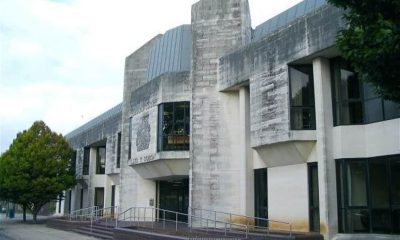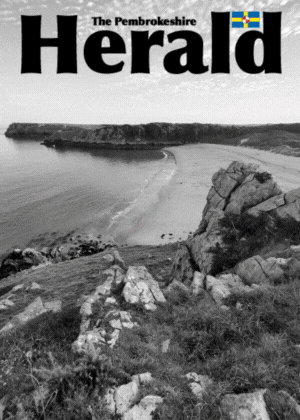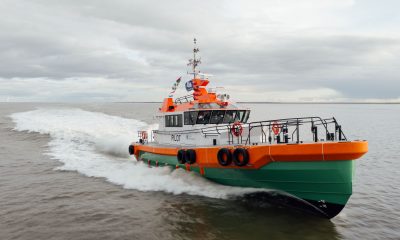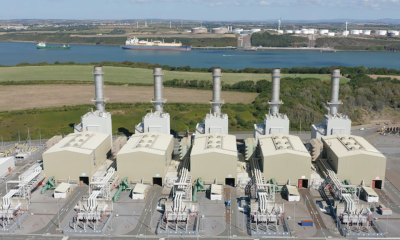News
Is the Council’s Head of Legal Services seeking a large pay-off?

AN EXTRAORDINARY meeting of Pembrokeshire County Council will take place on Monday, November 8. The only agenda item is described as “Settlement Agreement”. The question is: whose?
WHO WANTS TO SETTLE?
East Williamston councillor Jacob Williams revealed the agenda item doesn’t relate to former CEO Ian Westley.
Only senior officers’ payoffs come before the Full Council for discussion.
Bearing in mind the recent formation of a disciplinary panel to deal with senior staff and the expected explosion of activity when the Audit Wales report into Mr Westley’s departure lands, it isn’t unreasonable to state that the proposed settlement agreement must deal with a person who might be subject to the new disciplinary procedure.
That disciplinary procedure encompasses senior statutory officers (posts the Council must have by law).
The statutory officers are the Chief Executive, the Monitoring Officer, the Head of Legal Services, the Chief Financial Officer (usually called the “s151 officer”).
We can discount the Chief Executive (Will Bramble, who has only just taken up his post) and the Monitoring Officer (Claire Jones fell on her sword as soon as she saw the extract of the draft Audit Wales report dealing with her role in Mr Westley’s departure).
A PROCESS OF ELIMINATION
That leaves two officers.
Jon Haswell, the Council’s Finance Director, and Claire Incledon, the Head of Legal Services.
Ms Incledon has been on long-term sick leave since the extract of the draft Audit Wales report landed on her doormat.
Mr Haswell has, however, been ever-present in Council decision making.
It does not take much of a Poirot to work out which of the two officers is more likely to seek a settlement agreement at this time.
Making the educated guess that Ms Incledon is prepared to seek terms and has signalled which terms she wants leaves the Council with interlocking problems impossible to resolve without a cost to the Council taxpayer.
Whichever route the Council chooses, regardless of the senior officer’s identity, presents difficulties.
A LAWYER’S VIEW
We asked a vastly experienced in-house lawyer with particular expertise in public sector employment for their view.
They took it as read that no councillor would discuss the matter in public and described those who would do so in sulphurous terms.
They told us it was a question of how the Council looked at risk and minimising its financial exposure.
In the worst-case scenario, the Council decides not to settle with the officer on any terms and proceeds to a disciplinary procedure involving an independent external investigator (almost certainly a senior lawyer).
The officer subject to the process remains on the Council payroll while the disciplinary procedure takes place. In addition, the Council will have to bear the costs of the procedure both in terms of professional fees incurred to advise the disciplinary panel and the investigating officer.
That sum alone could easily exceed £50,000, and our lawyer said he would not be surprised at a far higher bill.
Suppose the investigating officer finds misconduct short of that justifying dismissal. In that case, the Council is back to square one with an employee that wants away. In short, the Council still faces making a payoff.
It gets worse.
Suppose an investigating officer reaches conclusions that suggest dismissal is the only appropriate remedy. In that case, it is still open to the employee to challenge their conclusions and take their chances at an employment tribunal.
In that instance, there would be massive additional costs and additional litigation risk.
We are at least six months away from that point.
And, as of today, we do not even have the Audit Wales report upon which so much will hinge.
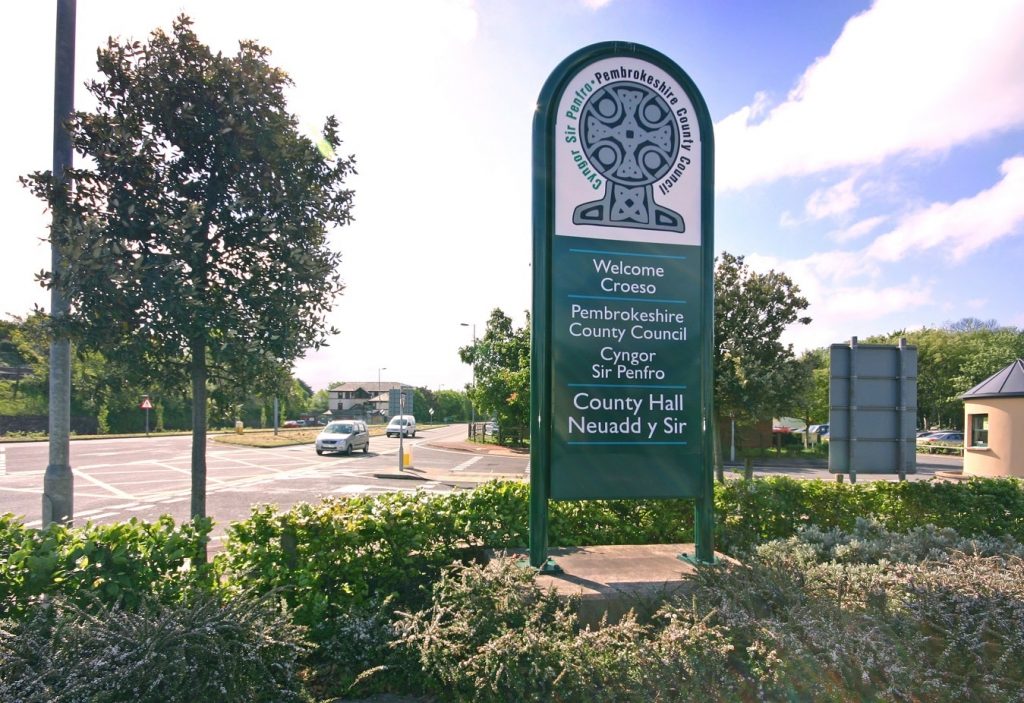
THE AUDIT WALES REPORT
We can only guess at the content of the Audit Wales report regarding individual officers’ conduct during the negotiations surrounding Mr Westley’s departure.
Forget the why; the question before Audit Wales relates only to the process behind the payoff and not its motivations or causes.
We already know several things.
The payment made to Mr Westley was unlawful.
We also know the Leader must have taken legal advice on the content and procedure concerning the former CEO’s departure terms.
We know that advice came from the Council’s officers, particularly the Monitoring Officer and Head of Legal.
We can conclude if the agreement was entered into unlawfully, the advice given about it was in some way defective.
Even Jamie Adams and the Senior Officers’ Fan Club in the IPG must know it beggars belief that either David Simpson or Jonathan Haswell would have signed off on an agreement knowing it was unlawful.
There is also one tactical consideration.
Once the Audit Wales report comes out, whenever that will be, the officer’s hand is likely to be significantly weakened by any criticisms of them contained within it. Once they have the report, its content could considerably harden councillors’ hearts.
POLITICAL CONSIDERATIONS
It is likely, if not certain, the absence of the Audit Wales report will persuade a majority of councillors to hold fire on any negotiations.
It will suit some councillors (especially Jamie Adams) to spin out events as long as possible, leaving matters probably unresolved until after May’s election. At which point, someone as cynical as Cllr Adams knows were he returned as Leader, he’d probably sign a settlement agreement as soon as possible.
Equally, more bullish councillors might want to resist any settlement on the principle that a disciplinary procedure should run its course, regardless of the risks and costs attached.
Yet others might want to keep rocking the boat for their political ends and to keep their name before the public ahead of the next May’s Council elections.
What is certain is that nobody wants to pay off another officer.
It’s equally certain not every officer is prepared to hand in their notice when they’re found to have made an expensive mistake.
This article was originally published in The Pembrokeshire Herald print edition on Friday, November 5, 2021
News
Angle RNLI launch stood down after false distress beacon alert
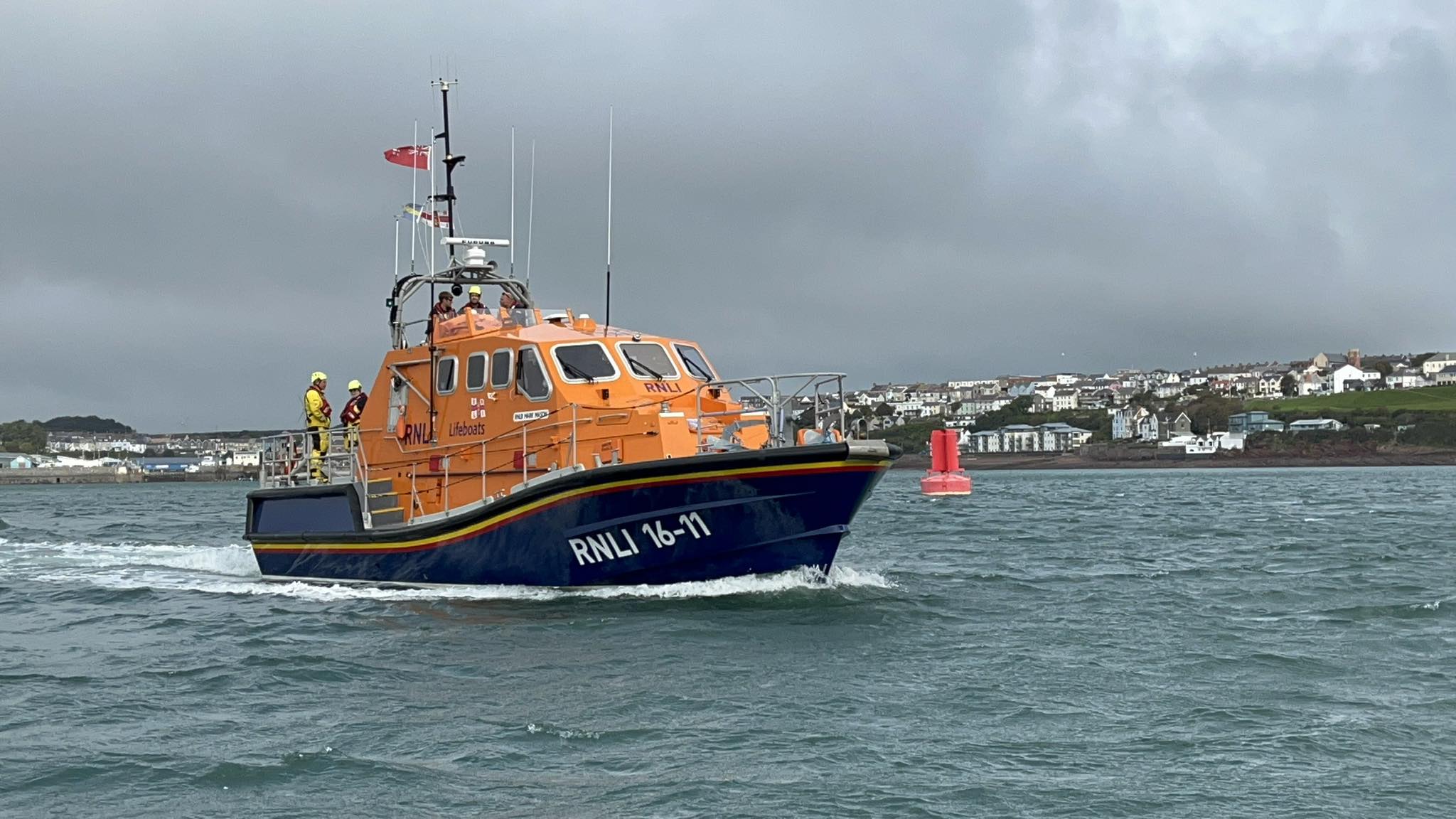
ANGLE RNLI were paged at 10:47am this morning after an EPIRB (Emergency Position Indicating Radio Beacon) was triggered on a local fishing vessel in the Dale Roads area.
Dale Coastguard Rescue Team was also tasked to investigate the alert.
As the lifeboat crew prepared to launch, further checks by HM Coastguard — along with direct contact from the vessel’s skipper — confirmed the beacon had been activated accidentally.
With no-one found to be in difficulty, the launch was cancelled.
Business
Cardiff Airport announces special Air France flights for Six Nations

Direct services to Paris-Charles de Gaulle launched to cater for Welsh supporters, French fans and couples planning a Valentine’s getaway
CARDIFF AIRPORT and Air France have unveiled a series of special direct flights between Cardiff (CWL) and Paris-Charles de Gaulle (CDG) scheduled for February 2026.
Timed to coincide with two major dates — the Wales v France Six Nations clash on Saturday 15 February and Valentine’s weekend — the flights are designed to offer supporters and holidaymakers an easy link between the two capitals.
For travelling French rugby fans, the services provide a straightforward route into Wales ahead of match day at the Principality Stadium, when Cardiff will once again be transformed by the colour, noise and passion that accompanies one of the tournament’s most eagerly awaited fixtures.
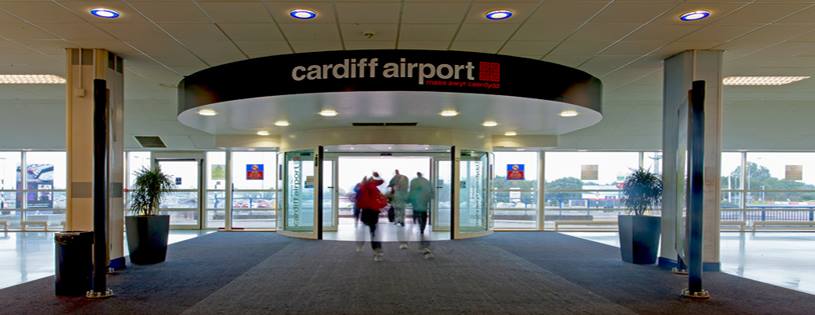
For Welsh passengers, the additional flights offer a seamless escape to Paris for Valentine’s Day, as well as opportunities for short breaks and onward travel via Air France’s wider global network.
Cardiff Airport CEO Jon Bridge said: “We’re thrilled to offer direct flights to such a vibrant and exciting city for Valentine’s weekend. Cardiff Airport is expanding its reach and giving customers fantastic travel options. We’ve listened to passenger demand and are delighted to make this opportunity possible. There is more to come from Cardiff.”
Tickets are already on sale via the Air France website and through travel agents.
Special flight schedule
Paris (CDG) → Cardiff (CWL):
- 13 February 2026: AF4148 departs 17:00 (arrives 17:30)
- 14 February 2026: AF4148 departs 14:00 (arrives 14:30)
- 15 February 2026: AF4148 departs 08:00 (arrives 08:30)
- 15 February 2026: AF4150 departs 19:40 (arrives 20:10)
- 16 February 2026: AF4148 departs 08:00 (arrives 08:30)
- 16 February 2026: AF4150 departs 16:30 (arrives 17:00)
Cardiff (CWL) → Paris (CDG):
- 13 February 2026: AF4149 departs 18:20 (arrives 20:50)
- 14 February 2026: AF4149 departs 15:20 (arrives 17:50)
- 15 February 2026: AF4149 departs 09:20 (arrives 11:50)
- 15 February 2026: AF4151 departs 21:00 (arrives 23:30)
- 16 February 2026: AF4149 departs 09:20 (arrives 11:50)
- 16 February 2026: AF4151 departs 17:50 (arrives 20:20)
Crime
Mother admits “terrible idea” to let new partner change her baby’s nappies alone
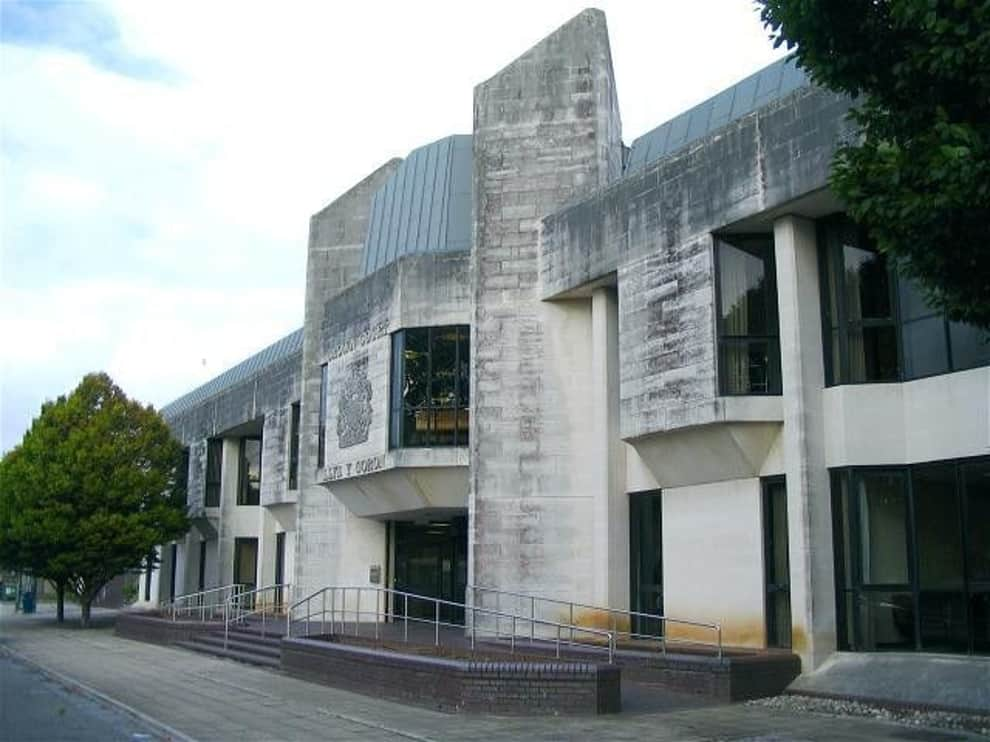
Court hears from timid mother who was barely audible in the witness box who said she carried out no checks to establish whether Phillips was safe to be around her child
A MOTHER who cannot be named for legal reasons gave evidence yesterday in the trial of Christopher Phillips, the man accused of physically and sexually assaulting her infant son – referred to as Baby C – and causing him life-changing injuries in January 2021.
Phillips, 37 at the time, had been in a relationship with the mother for only a few weeks when Baby C, then around 10 weeks old, suffered catastrophic anal injuries at a flat in Haverfordwest, Pembrokeshire. The child was rushed to Glangwili Hospital in the early hours of January 24 and survived, but the harm was permanent. Phillips denies 11 counts of sexual penetration of a child under 13, four counts of causing grievous bodily harm with intent, and one count of assault occasioning actual bodily harm, all between December 20, 2020, and January 25, 2021. The mother denies two charges of causing or allowing a child to suffer serious physical harm and two charges of child cruelty by neglect.
The prosecution alleges that Phillips deliberately inflicted the injuries while alone with the baby during nappy changes, using a finger coated in Sudocrem as lubricant on multiple occasions, leading to escalating harm including blood in the nappies and ultimately a massive tear and prolapse. A central part of their case is that the mother repeatedly allowed Phillips unsupervised access to her son – including taking him into another room to change his nappy and shut the door – despite knowing very little about him and despite behaviour that should have raised alarm, such as his insistence on privacy and her own unease.
Late on Thursday morning (Dec 4), under lengthy and forceful cross-examination by Caroline Rees KC, prosecuting, the mother appeared composed but spoke so quietly and timidly that people in court struggled to hear her answers. She conceded point after point:
- She carried out no checks to establish whether Phillips was safe to be around her child.
- She allowed him to be alone with Baby C from the very start of January 2021 (possibly even before 2 January).
- She ignored her own concerns and permitted Phillips to shut the door while changing the baby’s nappy, telling her not to enter or accusing her of “micromanaging”.
- She accepted that this had exposed her son to “a massive risk” and had been “a terrible idea”.
The mother explained that Phillips had said he wanted to learn nappy-changing because he “never got the chance” with his own child. She initially stayed in the room but soon permitted him to take Baby C into a separate room alone. She also recounted noticing odd details during changes, such as Phillips having Sudocrem around his finger “as if it had come from a pot” – despite her not owning a pot of the cream – and him leaving the room without putting the baby’s babygro back on after fastening the nappy, which immediately struck her as wrong. A few days earlier, she had discovered extensive bruising to the baby’s bottom, a swollen testicle and blood in his nappy, prompting her to confide in family and seek medical advice, though Phillips became angry when she mentioned the appointments.
Key moments from the cross-examination
Caroline Rees KC: “You took no steps whatsoever to keep Baby C safe, did you?” Mother (barely audible): “No.”
Caroline Rees KC: “You did absolutely nothing to keep him safe, did you?” Mother: “No.”
When His Honour Judge Paul Thomas KC asked her to clarify for the jury why she let Phillips change the baby alone, she confirmed:
“I wasn’t allowed in the room. If I tried to go in he would accuse me of micromanaging.”
She said this made her feel “annoyed”, but she “ignored it”.
Caroline Rees KC put it directly to the mother:
- “The signs were all there, weren’t they?”
- “It was a terrible idea, wasn’t it?”
- “You could have stopped it at any time – by doing the changes yourself or by ending the relationship.”
- “This man wanted to have your baby on his own more than is normal.”
The mother eventually accepted each proposition, agreeing that:
- Allowing Phillips to change the baby alone had been “a terrible idea”;
- The warning signs that she should have stopped it were present;
- Phillips’ desire to be alone with her son was greater than normal.
She admitted she had been “keen to have company” and had tolerated behaviour she should never have accepted.
Legal matters will be dealt with tomorrow morning only. Closing speeches are expected to continue into Monday.
The trial continues.
-

 Crime2 days ago
Crime2 days agoDefendant denies using Sudocrem-covered finger to assault two-month-old baby
-

 Crime6 days ago
Crime6 days agoMan denies causing baby’s injuries as police interviews read to jury
-

 News23 hours ago
News23 hours agoBaby C trial: Mother breaks down in tears in the witness box
-

 Crime23 hours ago
Crime23 hours agoPembroke rape investigation dropped – one suspect now facing deportation
-

 Crime7 days ago
Crime7 days agoMan denies injuring baby as jury hears police interview in ongoing abuse trial
-

 Crime2 days ago
Crime2 days agoLifeboat crew member forced to stand down after being assaulted at Milford pub
-

 Crime2 days ago
Crime2 days agoDefendant denies causing injuries to two-month-old baby
-

 Crime2 days ago
Crime2 days agoPembrokeshire haven master admits endangering life after speedboat collision











